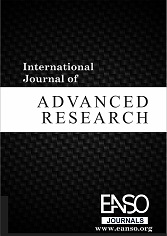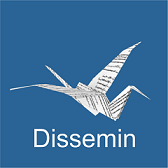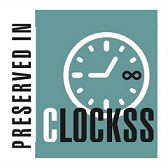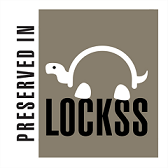An Assessment of the Attitudes of Social Service Professionals towards People with Albinism in Dar es Salaam, Tanzania
Abstract
Social services professionals are agents of change in any society. For many years, people with albinism in Tanzania have faced many injustices and malicious acts like murder, kidnapping, rape, cutting, and selling their body parts. In Tanzania, due to their condition, they have been placed under the category of “people with disability”. It has fallen to social services professionals to be their saviours and protectors, helping them voice their problems and other issues. This study aims to examine the attitudes of social services professionals, their roles, and the precautionary measures taken towards protecting people with albinism in the Dar es Salaam region. In this study, 30 participants were contacted, but only 24 responded, and these were 6 social services professionals from the government, 6 from the non-governmental organisations, 10 people with albinism who acted as volunteers, 1 journalist, and 1 social service professional from an embassy. A qualitative research design was adopted through a semi-structured interview guide. The analysis of these participants’ opinions was carried out with NVivo 12 software. The results of the analysis reveal that social services professionals have more positive attitudes, like acceptance, respect, defence, support, and love, than negative attitudes, which include unhelpfulness, pessimism, and unfairness towards people with albinism. Promoting education, advocacy, and awareness-raising were some of the roles and precautionary measures used towards protecting people with albinism. From the findings, recommendations to the government, non-governmental organisations, social workers, and people with albinism were to bring changes to the education and health sectors. It was realised that self-awareness concept on people with albinism and the challenges facing social services professionals should be examined as an area for further research; this will positively stress and broaden the compassion about people with albinism and how to support them
Downloads
References
Alum, A., Gomez, M., & Ruiz, E. (2009). Hocus Pocus, Witchcraft, and Murder: The Plight of Tanzanian Albinos. Chicago: Northwestern University of Law.
Amnesty International. (2016). “We Are Not Animals to be Hunted or Sold” Violence and Discrimination against people with albinism in Malawi. AFR 36/4126/2016 Retrieved from https://www.amnesty.org.uk/files/we_are_not_animals_-_malawi_report_-_final_formated.pdf
Aquaron, R. (1990). Ophthalmic Paediatrics and Genetics. Oculocutaneous albinism in Cameroon a 15-year follow up study. Opthalmic Genetics 11(4): 255–263. Retrieved from https://doi.org/10.3109/13816819009015711
Baron, R.A., & Byrne, D. (1991): Social Psychology: Understanding Human Interaction; 6th edition. Boston: Allyn and Bacon, pp. 137-179
Baron, R.A., & Byrne, D. (1997). Social Psychology (8th Ed.). Boston: Allyn & Bacon.
Brilliant, M. (2015). Albinism in Africa: A Medical and Social Emergency International Health, 7(4), p.223-225. Retrieved https://academic.oup.com/inthealth/article/7/4/223/2458905
Brocco, G. (2015). Disability & Society. Labeling Albinism: Language and Discourse Surrounding People with Albinism in Tanzania. 30(8), 1143–1157. Retrieved from https://doi.org/10.1080/09687599.2015.1075869
Burke, J., Kaijage, T. J., & John-Langba, J. (2014). Media Analysis of Albino Killings in Tanzania: A Social Work and Human Rights Perspective. 8(2), 117–134. Retrieved from https://doi.org/10.1080/17496535.2014.895398
Central Intelligence Agency (CIA). (2017). The World FactBook: Africa: Tanzania https://www.cia.gov/library/publications/the-world-factbook/geos/tz.html
Denzin, N. K., & Lincoln, Y. S (Eds). (1994). Handbook of Qualitative Research. Sage Publications, Inc.
Ford, J.D. (2014). Attitudes Toward Persons with Albinism among a Sample of Barbadian and Trinidadian Nationals. Caribbean Educational Research Journal, 2(2), 32–49. Retrieved from https://www.cavehill.uwi.edu/fhe/education/publications/past-issues/volume-2-number-2-september-2014/articles/article-3-j-deanne-ford.aspx
Holder, M. (2000, March 12). An albino speaks. The Nation Newspaper, p. 8.
Hugaas, J. (2010). Ethics and Social Welfare: Evil’s Place in the Ethics of Social Work. 4(3): 254–279
Kiprono, S. K., Joseph, L. N., & Naafs, B. (2012). Quality of life and people with albinism in Tanzania: More than only a loss of pigment. Open Dermatology Journal, 6(1), 129– 134. https://doi.org/10.2174/1874372201206010129
Lund, P.M., & Gaigher, R. (2002). A Health Intervention Program for Children with Albinism at a Special School in South Africa. Health Education Research. 17(3): 365 –372. Retrieved from https://doi.org/10.1093/her/17.3.365
Marcon, V. (2013). Albinism in Tanzania: A Human Rights Issue. An Experience of Monitoring the "White Blacks". (Master’s thesis, University of Padua). Retrieved fromhttps://www.academia.edu/9140081/Albinism_in_Tanzania_a_Human_Rights_Issue._An_Experience_of_Monitoring_the_White_Blacks
Masanja, M., M, Mvena ZS. & Kayunze K, A. 2014. Albinism: Awareness, Attitudes and Level of Albinos’ Predicament in Sukuma land, Tanzania Asian Journal of Applied Science and Engineering, 3, 382-395
Masanja, M. M., Imori, M. W., & Kaudunde, I. J. (2020). Factors Associated with Negative Attitudes towards Albinism and People with Albinism: A Case of Households Living with Persons with Albinism in Lake Zone, Tanzania. Open Journal of Social Sciences, 8,523-537.
Moretti, R. (2019). Inside the news, Over the world: The Albinos Born with Targets on Their Heads. Retrieved 2019, from https://www.insideover.com/society/the-albinos-born-with-targets-on-their-heads.html.
National Organization for Albinism and Hypopigmentation (NOAH). (2014). What is Albinism? (Booklet) 1–8. Retrieved from https://www.albinism.org/wp-content/uploads/2017/10/NOAH-WHAT-IS-ALBINISM_BULLETIN_SchoolKit.pdf
Navuri, E. (2009, March 18). Tanzania urged to stop killings of albinos. Daily News. https://dailynews.co.tz
Ntetema, V. (2008, July 24). In hiding for exposing Tanzania witchdoctors. BBC New
Okoro, A.N. (2006). Albinismin Nigeria. A Clinical and Social Study 92(5), 485–492. Retrieved from https://www.ncbi.nlm.nih.gov/pubmed/1174464
One World – Nations Online. (2019). Political Map of Tanzania. Retrieved from https://www.nationsonline.org/oneworld/map/tanzania-political-map.htm
Robins, A.H. (1991). Biological Perspectives on Human Pigmentation. Cambridge University Press.
Selepe, D. M. (2007). Teenagers with Oculocutaneous Albinism in Polokwane: Their self-esteem and perceptions of societal attitudes. Retrieved from http://ulspace.ul.ac.za/handle/10386/97.
Tanzania National Bureau of Statistics. (2020). Census 2012 – Difficulty in Seeing was the Most Reported Type of Disability. Retrieved from https://www.nbs.go.tz/index.php/en/census-surveys/health-statistics/disability- statistics/101-census-2012-difficulty-in-seeing-was-the-most-reported-type-of- disability
Tanzania National Bureau of Statistics. (2018). Tanzanian Figures 2018. Retrieved from https://www.nbs.go.tz/index.php/en/tanzania-in-figures/422-tanzania-in-figures-2018.
The United Republic of Tanzania Ministry of Labor, Youth Development, and Sports. (2004). National Policy on Disability. Retrieved from http://www.childrightsforum.org/files/National%20Policy%20on%20Disability%202004.pdf
The United Republic of Tanzania President’s Office, Regional Administration and Local Government. (2019). Kinondoni Municipal Council. Retrieved from http://www.kinondonimc.go.tz/municipal-profile
The United Republic of Tanzania President’s Office, Regional Administration and Local Government. (2019). Ilala Municipal Council. Retrieved from http://ilalamc.go.tz/#
The World Bank. (2019). Tanzania Overview. Retrieved from https://www.worldbank.org/en/country/tanzania/overview
Under The Same Sun (UTSS). (2012). What is Albinism? Retrieved from https://www.underthesamesun.com/sites/default/files/What%20is%20Albinism%20-%20ENGLISH.pdf
The Albino Foundation. (2019). Living with Albinism. Retrieve from https://albinofoundation.org/living-with-albinism/.
Under The Same Sun (UTSS). (2012). Frequency of Albinism/Rates of Occurrence Retrieved from https://www.underthesamesun.com/sites/default/files/Frequency%20of%20Albinism.pdf
Under The Same Sun (UTSS). (2014). Children with Albinism: Violence & Displacement. (pp. 1–30). Dar es Salaam, Tanzania: UTSS.
Under The Same Sun (UTSS). (2017). Don Sawatzky Replies to Journalist and Research Questions. Retrieved from https://spaces.hightail.com/space/ETleI0h2HE/files/fi-eca92c98-eeea-47b7-8ec2 61023de57eb1/fv-90c9c227-f40d-4fd8 b47aed8f7f531c18/A%20UTSS%20reply%20to%20journalist%20questions.pdf
Under The Same Sun (UTSS). (2017). Kenyans with Albinism and Racial Discrimination. (pp. 5–6). Dar es Salaam, Tanzania: UTSS. Retrieved from https://tbinternet.ohchr.org/Treaties/CERD/Shared%20Documents/KEN/INT_CERD_NGO_KEN_27123_E.pdf
Under The Same Sun (UTSS). (2019). Graph Tanzania Attacks. Retrieved from https://spaces.hightail.com/space/BoRXum0aAA/files
United Nations. (2008). Backgrounder: Disability Treaty Closes a Gap in Protecting Human Rights. Retrieved from https://www.un.org/development/desa/disabilities/backgrounder-disability-treaty- closes-a-gap-in-protecting-human-rights.html
United Nations. (2014). Malawi: Protecting Lives ofPersons with Albinism. Retrieved from https://mw.one.un.org/protecting-lives-of-persons-with-albinism/.
United Nations. (2015). Universal Declaration of Human Rights (Booklet). Retrieved from https://www.un.org/en/udhrbook/pdf/udhr_booklet_en_web.pdf
White, T. (2011). ‘Their Whiteness Is Not Like Ours’: A Social and Cultural History of Albinism and Albino Identities, 1650-1914 (Doctorate thesis, University of Manchester). Retrieved from https://www.research.manchester.ac.uk/portal/files/54515231/FULL_TEXT.PDF
World Health Organization. (2011). World Report on Disability. Retrieved from https://www.who.int/disabilities/world_report/2011/report.pdf
Copyright (c) 2025 Halima Shekuwe, Rehema Shekuwe, Ninza Mbaza

This work is licensed under a Creative Commons Attribution 4.0 International License.




























